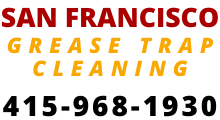Grease Interceptor Pumping
San Francisco
Professional Large-Capacity Grease Interceptor Maintenance for San Francisco Commercial Facilities
Expert pumping and cleaning services for large-scale grease interceptors serving high-volume kitchens, multi-tenant buildings, and institutional food service operations throughout San Francisco
San Francisco Grease Trap Cleaning provides specialized grease interceptor pumping services designed for San Francisco’s largest food service facilities, maintaining compliance with stringent capacity and maintenance requirements.
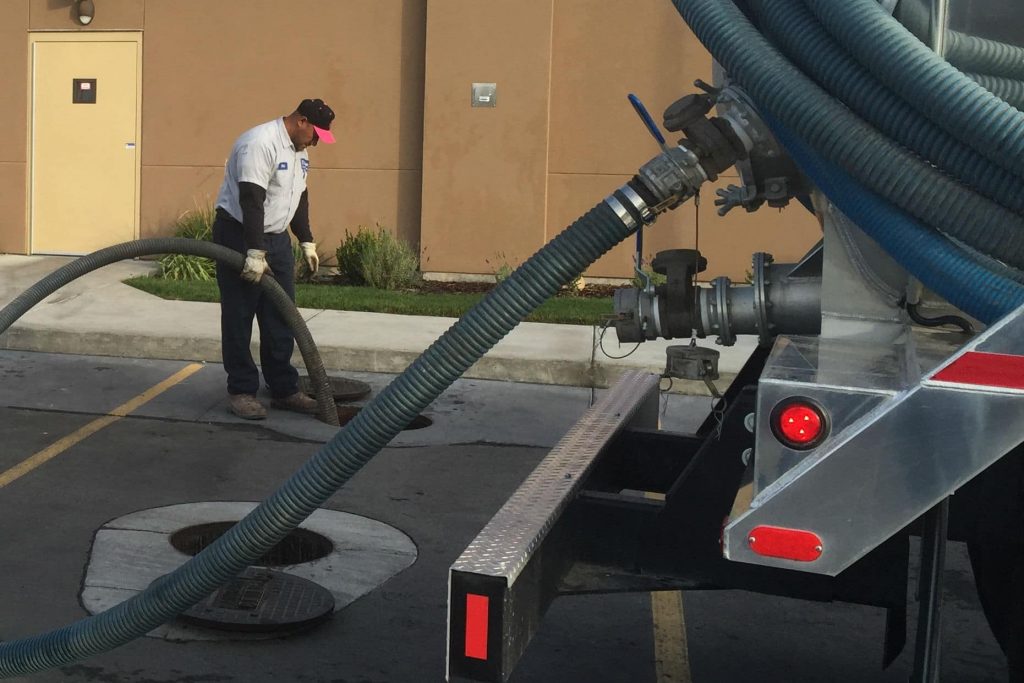
REQUEST YOUR SAN FRANCISCO GREASE INTERCEPTOR SERVICE
GET A GUARANTEED CALL BACK TODAY


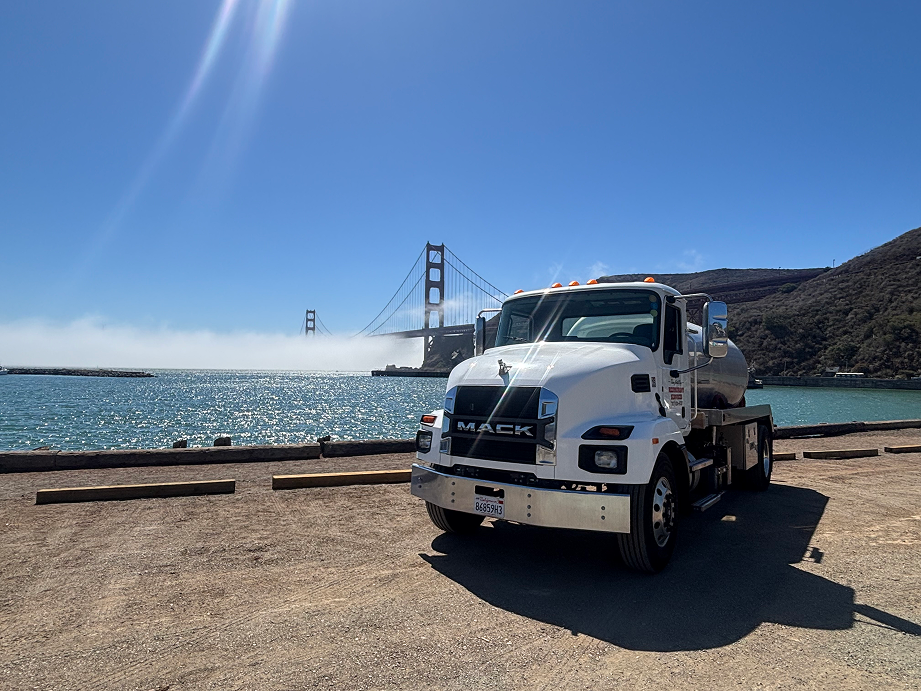
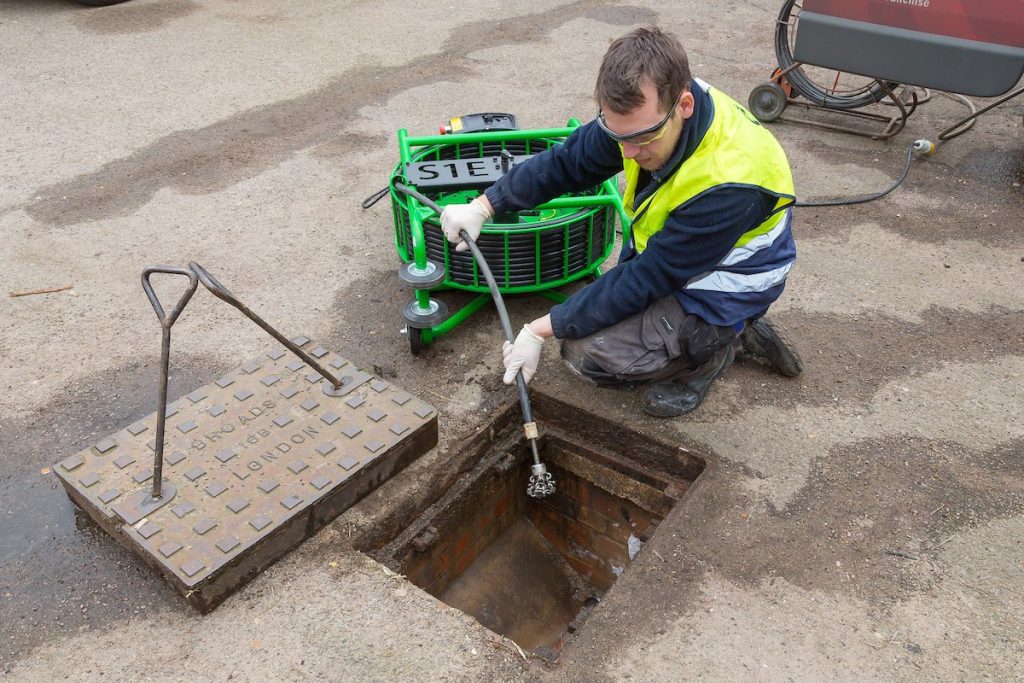
Expert Grease Interceptor Pumping for San Francisco Large-Scale Operations
San Francisco commercial facilities with high-volume food service operations rely on large-capacity grease interceptors to manage substantial quantities of fats, oils, and grease generated daily. These critical systems require specialized pumping equipment, trained technicians, and precise maintenance schedules to function properly and meet San Francisco regulatory requirements.
Our grease interceptor pumping services handle units ranging from 1,000 gallons to over 10,000 gallons, using heavy-duty vacuum trucks and professional equipment designed specifically for large-scale waste removal. We understand the unique challenges of servicing below-ground interceptors, managing high-volume waste streams, and maintaining operations for San Francisco’s busiest commercial kitchens.
Heavy-Duty Pumping Equipment
Large grease interceptors require industrial-capacity vacuum trucks capable of removing thousands of gallons of waste in single service visits. Our fleet includes specialized equipment that handles high-volume pumping efficiently while meeting San Francisco environmental transport requirements.
Complete System Cleaning
Effective interceptor maintenance extends beyond simple pumping. We remove accumulated solids from interceptor bottoms, clean baffles and internal components, and flush inlet and outlet lines to restore full system capacity and operational efficiency.
Our Grease Interceptor Service Process for San Francisco Facilities
San Francisco Grease Trap Cleaning follows comprehensive procedures for grease interceptor maintenance throughout San Francisco:
- Access and Preparation – Careful removal of trap covers
- Pre-Service Assessment – Review of interceptor specifications, previous service records, and current fill levels to plan appropriate service approach
- Complete Waste Removal – Thorough pumping of liquids, sludge, and accumulated solids using high-capacity vacuum equipment
- Interior Cleaning – Physical cleaning of interceptor walls, baffles, and internal components to remove stubborn residue and buildup
- System Inspection – Examination of interceptor structure, baffles, inlet/outlet pipes, and components for damage or deterioration
- Documentation – Detailed service records including volumes removed, system condition observations, and maintenance recommendations
- ith attention to gasket preservation and surrounding area protection
- Complete Pumping – Removal of all trap contents including floating grease layer, liquid waste, and bottom sludge accumulation
- Physical Cleaning – Scrubbing of trap walls, baffles, inlet and outlet connections using appropriate tools and techniques
- Component Inspection – Examination of baffles, seals, gaskets, and trap structure for damage requiring repair or replacement
- Proper Reassembly – Careful reinstallation of components and covers ensuring proper seals and secure closure
After completing interceptor pumping services, we provide comprehensive documentation satisfying San Francisco Department of Public Works requirements and recommendations for ongoing maintenance optimization.
Professional Waste Transport and Disposal
All waste removed from San Francisco grease interceptors receives proper handling according to environmental regulations. We transport waste to licensed processing facilities where recyclable materials are separated and remaining waste disposed of responsibly.
Why San Francisco Facilities Choose Our Grease Interceptor Services
San Francisco Grease Trap Cleaning has serviced large-capacity grease interceptors throughout San Francisco for years, building expertise in high-volume waste management, regulatory compliance, and efficient service delivery that minimizes operational disruption.
San Francisco property managers, facility directors, and food service operators trust our ability to handle complex interceptor systems, maintain strict compliance schedules, and provide transparent communication throughout the service process.
Professional grease interceptor pumping services from San Francisco Grease Trap Cleaning include:
- High-capacity interceptor pumping
- Complete interior cleaning and scraping
- Baffle and component inspection
- Inlet and outlet line assessment
- Regulatory compliance documentation
- Emergency pumping services
- Scheduled maintenance programs
- Multi-location facility coordination
From hospital cafeterias to hotel food courts and multi-restaurant complexes, our team delivers thorough interceptor services that maintain system performance and regulatory compliance.
Understanding Grease Interceptors vs. Grease Traps
Many facility managers use “grease trap” and “grease interceptor” interchangeably, but these systems differ significantly in size, capacity, installation, and maintenance requirements.
Size and Capacity Differences
Grease traps typically range from 20 to 500 gallons and serve individual kitchens or small food service operations. Grease interceptors start at 1,000 gallons and can exceed 10,000 gallons, serving multiple kitchens, entire buildings, or large institutional facilities.
Installation Configurations
Grease traps often install indoors under sinks or adjacent to kitchen fixtures. Grease interceptors typically install underground outside buildings in concrete vaults, requiring specialized access for maintenance and pumping.
Flow Rate Capabilities
Grease traps handle relatively low flow rates from single kitchens. Grease interceptors manage high-volume wastewater flows from multiple sources, accommodating peak discharge periods from numerous fixtures operating simultaneously.
Maintenance Requirements
Grease trap pumping frequency depends on capacity and usage but typically occurs monthly to quarterly. Grease interceptors require less frequent pumping—often quarterly to annually—but involve significantly larger waste volumes and more complex service procedures.
Regulatory Standards
San Francisco regulates grease interceptors and traps differently, with interceptors subject to stricter capacity calculations, maintenance documentation, and performance standards due to their size and the volume of waste they manage.
Grease Interceptor Sizing and Capacity Requirements
Properly sized grease interceptors handle wastewater flows from connected fixtures while providing adequate retention time for grease separation. Understanding sizing requirements helps facility managers verify their systems meet San Francisco standards.
Flow Rate Calculations
Interceptor sizing begins with calculating total fixture flow rates. Each connected sink, dishwasher, floor drain, and food prep fixture contributes to total flow. San Francisco requires interceptors sized to handle peak simultaneous discharge from all connected fixtures.
Retention Time Requirements
Effective grease separation requires adequate retention time—typically 30 minutes for wastewater to pass through the interceptor. This allows grease to cool, rise to the surface, and separate from wastewater before discharge to the sewer system.
Storage Capacity Considerations
Beyond separation capacity, interceptors must store accumulated grease between service visits. Larger storage volume extends time between pumping but requires more space and higher installation costs.
Regulatory Compliance
San Francisco Department of Public Works mandates minimum interceptor sizes based on fixture counts, flow rates, and food service type. Undersized interceptors cannot perform properly and may result in code violations.
Affordable & Reputable Grease Trap Services
Common Grease Interceptor Service Needs for San Francisco Facilities
Different types of San Francisco properties with grease interceptors require varying service approaches based on facility size, food service volume, and system configuration.
Multi-Tenant Commercial Buildings
Buildings housing multiple restaurants or food service tenants often share single large-capacity interceptors serving all tenants. These systems handle diverse waste streams and require coordination among multiple operators for effective management.
Hotels and Conference Centers
Large hospitality facilities with banquet kitchens, restaurants, and room service operations generate substantial grease volumes requiring interceptors with significant capacity and regular maintenance schedules.
Hospitals and Healthcare Facilities
Medical centers with patient dining services, cafeterias, and catering operations maintain large interceptors serving diverse food service needs. These facilities prioritize reliable service that prevents operational disruptions.
Educational Institutions
Universities, colleges, and large school districts operate interceptors serving cafeterias, dining halls, and food courts that serve thousands of meals daily during academic terms.
Shopping Centers and Food Courts
Retail developments with multiple food vendors rely on shared interceptors managing combined waste streams from diverse restaurant types and cooking methods.
Signs Your Grease Interceptor Needs Pumping
Regular maintenance schedules prevent most problems, but recognizing warning signs helps facility managers address issues before they cause serious operational disruptions or regulatory violations.
Slow Drainage Throughout Facility
Multiple fixtures draining slowly or backing up simultaneously often indicates interceptor capacity problems. When grease layers become too thick or solids accumulate excessively, wastewater cannot flow through the system properly.
Foul Odors from Drains or Vents
Strong sewage or rancid grease smells emanating from drains, cleanouts, or vent pipes signal decomposing organic matter in the interceptor that requires removal.
Visible Grease at Interceptor Access Points
Grease visible at manholes, access covers, or cleanouts indicates the interceptor has reached or exceeded capacity and needs immediate pumping to prevent overflow.
Wastewater Backup or Overflow
The most serious indicator—wastewater backing up into kitchen fixtures or overflowing from the interceptor—requires emergency service to restore system function and prevent health code violations.
Extended Time Since Last Service
Even without obvious symptoms, interceptors require pumping based on calculated schedules. Extended periods beyond recommended service intervals increase malfunction risks regardless of apparent system performance.
Grease Interceptor Maintenance Best Practices
Proper interceptor management extends beyond periodic pumping to include operational practices, system monitoring, and preventive measures that maintain performance between service visits.
Regular Inspection Programs
Monthly visual inspections of interceptor access points help identify developing problems before they become serious. Check for grease accumulation, unusual odors, and proper water levels that indicate normal operation.
Flow Rate Management
Minimize slug loads—large volumes of wastewater discharged rapidly—that can overwhelm interceptor capacity. Stagger equipment use when possible and avoid simultaneous discharge from multiple high-volume fixtures.
Temperature Considerations
Hot water helps keep grease liquefied during transport to the interceptor, but excessively hot discharge can carry grease through the interceptor before adequate cooling occurs. Balance water temperature for effective grease separation.
Kitchen Staff Training
Educate staff about practices that affect interceptor performance, including proper food waste disposal, appropriate drain usage, and recognition of drainage problems requiring prompt attention.
Documentation Maintenance
Keep complete records of pumping services, inspections, and any maintenance performed. San Francisco health and public works inspectors may request these records during routine compliance reviews.
Emergency Grease Interceptor Pumping Services
Interceptor failures can occur without warning, particularly when regular maintenance has been neglected or unexpected events overwhelm system capacity. Emergency pumping services restore function and prevent extended operational shutdowns.
Rapid Response Capability
Interceptor overflow or complete system failure requires immediate professional response. Our emergency services prioritize these critical situations, deploying equipment and personnel quickly to address urgent problems.
After-Hours Service Availability
Grease emergencies often manifest during peak operation periods or after business hours. We provide emergency interceptor pumping when you need it, including evenings, weekends, and holidays.
Temporary Operational Solutions
While addressing emergency situations, we work with facility managers to implement temporary measures that allow continued operations during system restoration or repair.
Root Cause Analysis
Emergency service includes investigating why the failure occurred—whether from inadequate maintenance schedules, system damage, or operational issues—and recommending corrective actions to prevent recurrence.
Affordable & Reputable Grease Trap Services
San Francisco Grease Interceptor Regulations and Compliance
San Francisco maintains comprehensive regulations governing grease interceptor installation, sizing, maintenance, and documentation. Compliance protects facilities from fines and operational restrictions while supporting city infrastructure.
Department of Public Works Requirements
San Francisco DPW enforces grease interceptor standards including minimum capacity requirements, mandatory pumping frequencies, and documentation retention. Food service facilities must demonstrate ongoing compliance through maintained service records.
Pumping Frequency Mandates
San Francisco typically requires interceptor pumping when accumulated grease and solids reach 25% of total capacity. High-volume facilities may need service every 30-90 days, while lower-volume operations might maintain compliance with quarterly or semi-annual pumping.
Service Documentation Standards
Facilities must maintain pumping records including service dates, volumes removed, service provider information, and waste disposal locations. These records must be available for inspector review during routine compliance checks.
Penalty and Enforcement Actions
Violations of San Francisco grease management regulations can result in notices of violation, monetary fines, required corrective actions, and potential operational restrictions for serious or repeated non-compliance.
Permit and Approval Requirements
Large interceptor installations, modifications, or replacements require permits from San Francisco DPW. Professional contractors handle permit applications and ensure new installations meet current standards.
Grease Interceptor Inspection and Condition Assessment
Regular professional inspections identify developing problems, verify proper operation, and help optimize maintenance schedules for San Francisco grease interceptors.
Structural Integrity Evaluation
Interceptor tanks endure harsh conditions from grease, chemicals, and constant wastewater exposure. Inspections check for concrete deterioration, steel tank corrosion, and structural damage requiring repair.
Baffle System Assessment
Baffles direct flow through the interceptor and maintain separation zones. Damaged, corroded, or missing baffles compromise interceptor performance and require replacement to restore proper function.
Inlet and Outlet Pipe Condition
Connection pipes between kitchen drain lines and the interceptor experience grease buildup and potential damage. Inspection identifies restrictions or failures requiring cleaning or repair.
Access Point Integrity
Manhole covers, access lids, and gaskets must seal properly to prevent odor release and unauthorized access. Damaged covers need replacement to maintain safety and regulatory compliance.
Capacity and Performance Verification
Professional assessment determines if the interceptor continues meeting facility needs or if changing operations require system upgrades or more frequent maintenance.
Grease Interceptor Cleaning Beyond Standard Pumping
While regular pumping removes liquid and sludge, periodic deep cleaning addresses stubborn deposits and system components that standard pumping cannot fully restore.
High-Pressure Interior Washing
Specialized cleaning equipment uses high-pressure water to remove hardened grease and deposits clinging to interceptor walls, floors, and baffles. This thorough cleaning restores full system capacity and improves separation efficiency.
Mechanical Scraping and Removal
Some deposits resist water pressure alone. Professional technicians use specialized tools to mechanically scrape and remove stubborn buildup, particularly in older interceptors with years of accumulated residue.
Component Disassembly and Cleaning
Removable baffles, flow control devices, and internal components receive separate cleaning to eliminate grease coating that reduces their effectiveness. Clean components reinstall to restore designed system performance.
Complete System Restoration
Comprehensive cleaning combined with any necessary repairs returns even neglected interceptors to proper operating condition, extending system life and improving performance.
Cost Factors for Grease Interceptor Pumping Services
Grease interceptor pumping costs vary based on multiple factors. Understanding these variables helps facility managers budget appropriately for this necessary maintenance.
Interceptor Capacity
Larger interceptors contain more waste requiring removal, directly affecting pumping costs. A 2,000-gallon interceptor costs significantly less to service than a 10,000-gallon unit due to material volume differences.
Waste Volume and Composition
Interceptors with heavy solids accumulation or particularly difficult waste composition may require extended pumping time or specialized equipment, increasing service costs beyond standard pumping.
Access and Site Conditions
Easily accessible interceptors with good truck positioning allow efficient service. Difficult access, limited space, or special traffic control requirements increase labor time and costs.
Service Frequency
Regular maintenance contracts typically offer lower per-service costs than individual service calls. Scheduled service also prevents expensive emergency situations that command premium pricing.
Additional Services Required
Basic pumping costs less than comprehensive service including interior cleaning, component repairs, or line jetting. Discuss specific needs to receive accurate cost estimates.
Waste Disposal Requirements
Disposal costs for removed waste factor into total service pricing. These costs vary based on disposal facility requirements and waste characteristics.
Preventing Grease Interceptor Problems Through Operational Controls
Many interceptor issues result from operational practices rather than maintenance failures. Implementing proper kitchen procedures reduces waste generation and extends service intervals.
Kitchen Best Management Practices
Scrape plates thoroughly before washing, dispose of food waste in trash rather than drains, avoid pouring liquid grease into sinks, and use sink strainers to catch food particles before they enter drain systems.
Equipment Operation Procedures
Pre-rinse dishes before mechanical washing, avoid running hot water continuously, allow grease to cool before disposal, and maintain kitchen equipment to prevent excess grease generation.
Staff Training and Accountability
Regular employee training on grease management practices ensures consistent adherence to procedures that protect interceptor performance. Make grease management part of kitchen standard operating procedures.
Monitoring and Reporting Systems
Establish procedures for staff to report drainage problems, unusual odors, or other indicators of developing interceptor issues. Early detection allows proactive response before problems escalate.
Grease Interceptor Replacement and Upgrade Considerations
Older interceptors eventually require replacement due to structural deterioration, changing operational needs, or regulatory requirement updates. Understanding replacement factors helps facility managers plan appropriately.
Age and Condition Assessment
Interceptors typically function for 20-40 years depending on construction quality, maintenance history, and environmental conditions. Aging systems with frequent repairs may warrant replacement rather than continued maintenance.
Capacity Adequacy Evaluation
Facility expansions, menu changes, or increased business volume may exceed original interceptor design capacity. Undersized systems require more frequent pumping and may not meet current San Francisco requirements.
Technology Improvements
Modern interceptor designs incorporate improved flow patterns, better baffle systems, and enhanced access features that improve performance and simplify maintenance compared to older installations.
Regulatory Compliance
Compare ongoing maintenance costs for aging systems against replacement investment. Frequent repairs, emergency service, and compliance issues may justify replacement for long-term cost savings.


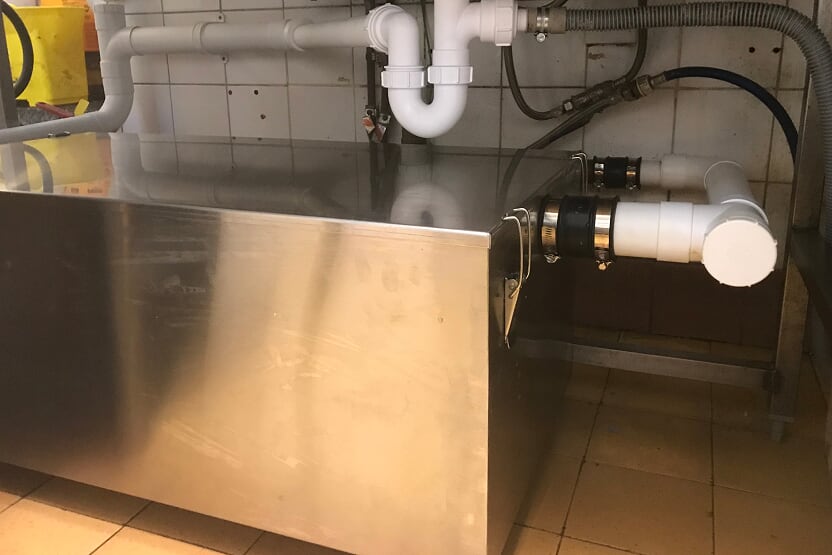
Environmental Impact of Proper Grease Interceptor Maintenance
Well-maintained grease interceptors protect San Francisco’s sewer infrastructure and water quality while supporting environmental sustainability goals.
Sewer System Protection
Properly functioning interceptors prevent grease discharge into San Francisco’s sewer system, reducing blockages that cause overflows and require expensive repairs. This protects municipal infrastructure and reduces maintenance costs affecting all residents.
Water Quality Preservation
Interceptors prevent fats, oils, and grease from reaching wastewater treatment facilities where they interfere with treatment processes. This supports San Francisco’s commitment to protecting Bay water quality.
Resource Recovery
Professional waste handling allows separation and recycling of collected materials. Grease can become biodiesel feedstock, while other materials undergo appropriate processing rather than landfill disposal.
Infrastructure Longevity
Preventing grease accumulation in sewer lines extends infrastructure life and reduces the environmental impact of frequent repairs or premature pipe replacement.
Multi-Location Grease Interceptor Service Coordination
Organizations operating multiple San Francisco facilities with grease interceptors benefit from coordinated service programs that ensure consistent maintenance across all locations.
Centralized Service Management
Single-source contracting for multiple locations simplifies administration, ensures consistent service quality, and typically provides cost advantages compared to managing individual location contracts.
Standardized Documentation
Centralized programs produce uniform service documentation across all facilities, simplifying compliance verification and providing clear oversight of maintenance status system-wide.
Optimized Scheduling
Multi-location service allows route optimization that reduces costs while ensuring each facility receives appropriate attention according to its specific needs and usage patterns.
Performance Monitoring
Comprehensive programs include system performance monitoring across facilities, identifying locations requiring schedule adjustments or operational improvements.
Selecting a Grease Interceptor Service Provider in San Francisco
Choosing the right service contractor affects interceptor performance, regulatory compliance, and long-term system maintenance costs for San Francisco facilities.
Experience with Large-Capacity Systems
Interceptor service requires different equipment, expertise, and procedures than smaller grease trap maintenance. Verify contractors have specific experience with large interceptors similar to your system.
Equipment Capabilities
Confirm providers operate appropriate high-capacity vacuum trucks, can access your specific site conditions, and maintain equipment to ensure reliable service delivery.
Regulatory Knowledge
Service providers should understand San Francisco DPW requirements, proper documentation procedures, and waste disposal regulations affecting interceptor maintenance.
Emergency Response Capability
Interceptor emergencies require rapid response with appropriate equipment. Evaluate provider emergency service availability and typical response times.
References and Reputation
Request references from facilities with similar interceptor sizes and service requirements. Verify provider reputation for quality work, reliability, and professional service.
Contract Terms Clarity
Review service agreements carefully, understanding service frequency, response commitments, pricing structure, and terms for additional services beyond routine pumping.
Professional Grease Interceptor Pumping Throughout San Francisco
Contact San Francisco Grease Trap Cleaning today for expert grease interceptor pumping and maintenance services that ensure regulatory compliance, system reliability, and efficient operation for your facility. Our experienced team provides professional service designed specifically for San Francisco’s large-capacity commercial grease management systems.
Call or text us at (415) 968-1930 to schedule your San Francisco grease interceptor service or request a free estimate.
Service Areas
San Francisco Grease Trap Cleaning proudly serves commercial facilities throughout San Francisco and surrounding communities including Berkeley, Alameda, and Oakland. Wherever your facility is located, we provide professional grease interceptor services that maintain your waste management systems and keep your operations in full compliance.
Affordable & Reputable Grease Trap Services
Frequently Asked Questions
What is a grease interceptor and how does it differ from a grease trap?
A grease interceptor is a large-capacity system designed to capture fats, oils, and grease from high-volume commercial kitchens, typically ranging from 1,000 to over 10,000 gallons. Unlike smaller grease traps used in single-kitchen operations, interceptors manage wastewater from multiple sources or entire buildings. Proper maintenance ensures compliance with San Francisco DPW regulations and prevents costly sewer blockages.
How often should San Francisco commercial facilities pump their grease interceptors?
Grease interceptor pumping frequency depends on system capacity, usage, and food service volume. High-volume kitchens may require pumping every 30–90 days, while lower-volume operations can follow quarterly or semi-annual schedules. Regular maintenance prevents backups, foul odors, and violations of San Francisco regulatory standards.
What does professional grease interceptor pumping service include?
Professional interceptor service in San Francisco includes high-capacity waste removal, interior cleaning of baffles and walls, inspection of inlet/outlet pipes, and full system documentation. Technicians use industrial-grade vacuum trucks and specialized tools for thorough cleaning. Comprehensive service ensures your system operates efficiently and meets regulatory compliance.
Can emergency grease interceptor pumping be performed after hours in San Francisco?
Yes, emergency pumping services are available during evenings, weekends, and holidays for facilities experiencing overflow or backups. Rapid response restores system functionality and prevents operational disruptions. San Francisco food service operators rely on these services to maintain compliance and uninterrupted kitchen operations.
How do I choose the right grease interceptor service provider in San Francisco?
Look for a provider experienced with large-capacity systems, equipped with industrial vacuum trucks, and knowledgeable about San Francisco DPW regulations. Verify references, emergency response capabilities, and thorough documentation practices. A professional provider ensures efficient pumping, proper waste disposal, and long-term interceptor performance.
